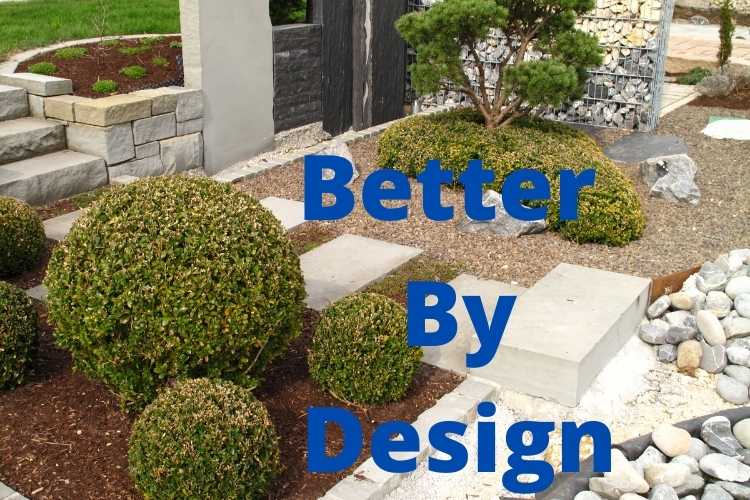Designing your own garden
10th Jan 2022
I’ve moved house lately and while it was a wrench to leave the garden we’d tended for 20 years it was exciting to think of the new space which awaited us. Especially as with moving into a new build the garden is a blank canvas. But whether you’re planning a new garden this spring or looking to improve or overhaul your existing space, designing your own garden is such an exciting thing to do.
An Englishman’s home is his castle, so they say and what’s more important than having a beautiful garden surrounding that castle? But if you’ve never designed a garden before, the thought of it can be incredibly intimidating. However, you don’t need to be an expert landscaper or designer to be able to create a stunning garden that will be the envy of your neighbours.
It takes a little bit of forward planning but it’s very enjoyable. There’s nothing about designing a garden which is onerous. Planning our new space was a hugely enjoyable exercise and we’ve drawn out dozens of designs and are still going through the process of finalising our plans.
Our easy steps to designing your own garden
Of course, if you’ve got very deep pockets you can hire a professional landscape gardener. But this can be a very expensive venture. According to landscaping experts, you should be willing to spend a whopping 10% of the value of the property in order to properly landscape your garden. This could be up to or in excess of £12,000!
Much of this cost will go towards paying the professional for their time but by doing it yourself, you’ll save a lot. And, anywhere, where is the fun in having someone else design your garden?
What’s more, designing and creating your own garden is a rewarding task. Yes, it might be time consuming but if you dedicate yourself to the project, the sense of achievement you’ll feel will be overwhelming. You’ll also be able to say that you genuinely put your own stamp on your garden.
Costs
We’ve already touched on this so let’s discuss some more. All you need to design your own garden is paper, pen and tape measure. You could buy some design software if you enjoy working on a computer but you don’t have to do this.
Of course, once the planning stage is over and you move on to actually making your design come alive the costs will begin. Plants, hedging, decorative stone, pavers, cement, edging, polytunnel… the list goes on. But that’s a whole different story.
Don’t forget though those planting costs can be significantly lowered by taking advantage of our bulk buy discount deals on plants, shrubs and trees. You can even buy mature hedging from us by the pallet load.
Plan, plan and plan some more
When you stand in your garden, you might not get an accurate feel for the size and shape of it so draw it out on graph paper and take exact measurements to make sure that, once the work begins, you aren’t left with any nasty surprises. I once failed to measure a space correctly and far too late I found a greenhouse I purchased wouldn’t fit. But you live and learn.
Planning is the key to success so don’t omit this stage. When you’ve got your measurements, make a rough plan of the garden to scale. You can do this using computer software or simply by drawing on a piece of paper.
One of the most important aspects of planning is to think about where the light falls in your garden. Take note of where the sun rises and sets and which parts of the garden benefit from light and shade. This will better allow you to plan for seating areas according to your preference. This also allows you to plan positions of plants as well as outbuildings such as a shed, greenhouse or polytunnel.
Think about how you’ll use the space
Before you start doing any physical work, you’ll want to think about what you’re looking to achieve. Do you want to grow a mature garden filled with plant life or would you prefer something low maintenance? If you don’t want to do a lot of gardening, things like woody shrubs can be planted and require very little upkeep. For those who enjoy taking care of plants, annual plants and herbaceous borders will certainly keep you busy.
Some people like to use their gardens for entertaining, in which case, you’ll want to factor in an area to do this. Does it require installing a decked area or patio or is there already somewhere suitable to put up a pergola or gazebo? What about fencing and how you will disguise those ugly fence panels?
Maybe you want something luxurious like a hot tub or a large play area for your children. These things usually take up the most space so you’ll need to decide on a location and plan the rest of the garden around them.
Get some inspiration
You want your garden to be unique and personal to you, but at the same time, it can be difficult to come up with ideas. The good thing is that there are hundreds of resources to ignite ideas in your mind like websites, magazines and even gardening shows.
You don’t need to copy concepts detail for detail but you might take ideas from several gardens and bring them together to create something that’s perfect for you.
It’s a good idea to think about the rest of your property when designing your garden so that everything flows. Of course, if you want a stark contrast between the house and the garden then that’s totally your prerogative but for most people, consistency is key.
You should look at the materials used in the construction of the house as well as colours and textures. Incorporating these into your garden design will give continuity and a very pleasing aesthetic.
Ideas for designing your own garden
While thinking about the bigger picture is essential and will help to ensure that you create a garden that looks breath taking, there are smaller elements that will really bring everything together. Take a look at the following tips that could make a huge difference to your garden.
●When painting your fences, carefully consider the colour you paint them and any wooden outbuildings. There are now so many wonderful outdoor paint colours you can buy that standard dark creosote or boring brown and green should be consigned to the past.
●Gravel is excellent for driveways, walkways and decorative areas but be sure to choose the right type. If you’re laying a gravel path then you want to make sure that the stones aren’t too small or they’ll get caught in your shoes. However, you don’t want to go too large as this doesn’t give great stability for walking. Bigger stones are better for driveways but in any case, it's essential to stabilise the area and compact the gravel.
●If you are laying paving stones, it’s worth making sure that you are familiar with how the stone will age. Different materials react differently to time and the elements. If you want to ultimately achieve a rustic look then natural stone will age beautifully.
●Be creative when it comes to installing a path. Of course, you’ll need to make sure it’s practical but you might choose to run it behind shrubs for a more unique look.
●If you would like a water feature in your garden, be sure to choose one that fits in with your lifestyle and family. Things like ponds can be very high maintenance and may be a safety risk for people with small children.
Have fun designing your garden
Designing a garden doesn’t have to be a complicated task, nor should it require a professional landscaper. If you’re keen to try your hand at designing your own garden, it’s perfectly feasible and you’ll soon have a garden that really does stand out from the crowd!


